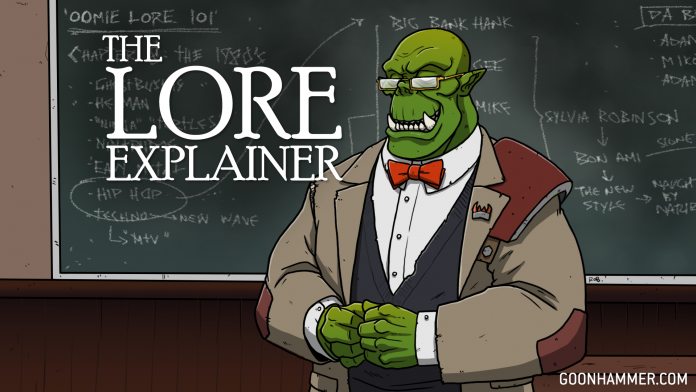Welcome to the fourth installment of Goonhammer’s ongoing chronicle of the history of the Black Library (40K Edition). Our first three installments explored the formative years of what would come to be the Black Library, a short-lived era where Games Workshopped commissioned existing science-fiction writers to craft some truly memorable tales of life in the grim, dark future.
Our Story So Far
By the mid-90s, it was a fairly-established best practice for game studios to novelize their properties in an effort to develop an additional revenue stream that could appeal to gamers and non-gamers alike. TSR’s Dungeons and Dragons had helped establish the template, with the Dragonlance Saga (for the Dragonlance setting) and the Moonshae Trilogy (for the Forgotten Realms) helping fuel a demand not just for games but for stories, tales, and legends that didn’t need any gaming experience to enjoy.
By the tail end of the 80s, Games Workshop was throwing its hat in the ring, with its Fantasy property seeing its first books in 1989 and 40K following the year after. Not content to just settle for pulp content, Games Workshop set its sights notably higher, but by the mid-90’s this piecemeal approach had run its course. To have real staying power, it was ready for a new approach.
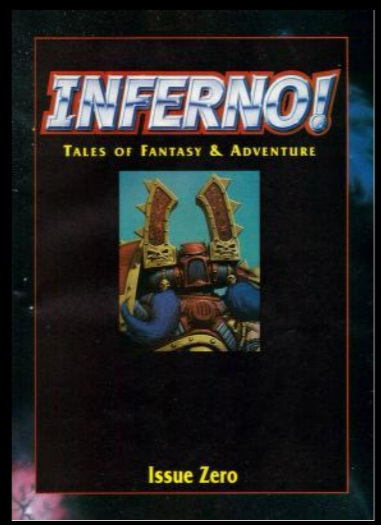
Serial for Breakfast
“For years, we have all known that Warhammer short stories, technical manuals, comic strips and so on would be brilliant, if only we could get them right,” opined Andy Jones, senior editor of Inferno! Magazine. “So far, we have been so busy designing new models and games, opening stores, getting White Dwarf right, sorting out Games Day…that none of these sexciting things have happened. Not exactly the way we wanted them, anyway.”1
The full fruition of this vision came to readers of White Dwarf in their June issue in 1997, as they opened their magazines to find a special sixteen-page insert stapled within. “Issue Zero” of Inferno! Magazine had arrived, and with terrific cover art from Kev Walker (who amongst other things would ultimately go on to become the most prolific working artist for Magic: the Gathering).2
While intended as a preview for full launch of Inferno! as a separate, standalone periodical, Issue Zero was its own creature as well. “Everything on the next few pages has been specially commissioned for this preview issue,” noted Jones, “so it’s not even as though I’m being a cheapskate and shamelessly extracting chunks of issue 1 for a quick plug!”
Issue Zero was well-representative of what the future held for Warhammer fans, from prose (The Hounds of Winter, by Jonathan Green) to comics (the Dark Angels tale Bloodquest, written by Gordon Rennie and illustrated by Colin MacNeil), a Wanted poster from the Necromunda setting and more.
This was a significant departure from the previous book-centered model. Where had the idea come from? And how did it come together?
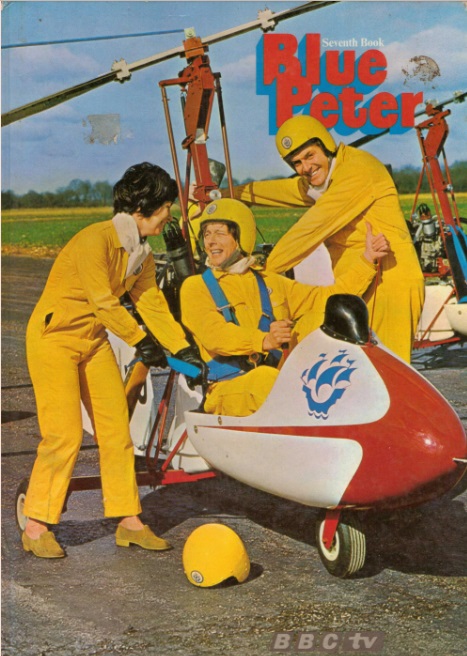
Blue’s Clues
Earlier this week the British Broadcasting Corporation (BBC) announced that it would be discontinuing live segments of its children’s program Blue Peter3. Blue Peter isn’t just a television show, it’s both the longest-running television show in the world (running since 1958) and something of a British cultural institution not entirely unlike, say, Sesame Street.
While a children’s television show might not be the obvious inspiration for Warhammer, childhood remains a fertile ground of the imagination able to be mined at all stages of life.
“It had long been a pipe dream of some members of GW to create a GW annual,” recalled Marc Gascoigne, editor and later the general manager of the BL Publishing arm, “almost like a Blue Peter Annual- books put out every Christmas… legendary for their mix of stories and show reports and practical things to do.
“The idea of doing something similar for Warhammer, with a mix of game rules and painting tips and shots of the latest models and, indeed, stories and comic strips, had long been harboured in the breast of folks like [Warhammer co-creator] Rick Priestley, who are certainly old enough to remember such things.”4
The “Black Library” as an entity was born on 04 April, 1997, and was comprised of a working group with Rick Priestley, Andy Jones, and Marc Gascoigne. They’d been working on the idea of the “Games Workshop annual,” named Carnage, but ultimately as projects evolve it became the bimonthly Inferno! Gascoigne again:
“Inferno! fulfilled, to some extent, this dream to do a GW annual, but it also did a lot of other things very quickly. The most important thing was that it taught us how to deal with freelance writers. People who were very good at spinning words, but also showed us the techniques we could use to harness their writing talents in creating fabulous stuff for Warhammer and 40K.
“Obviously in the GW Design Studio we have tremendous game writers, editors and artists, but they’re not necessarily skilled in the tropes of fiction. For BL we were able to come from the other direction, and Inferno! very quickly became a mechanism to recruit writers, and very soon artists and comic strip writers too.”
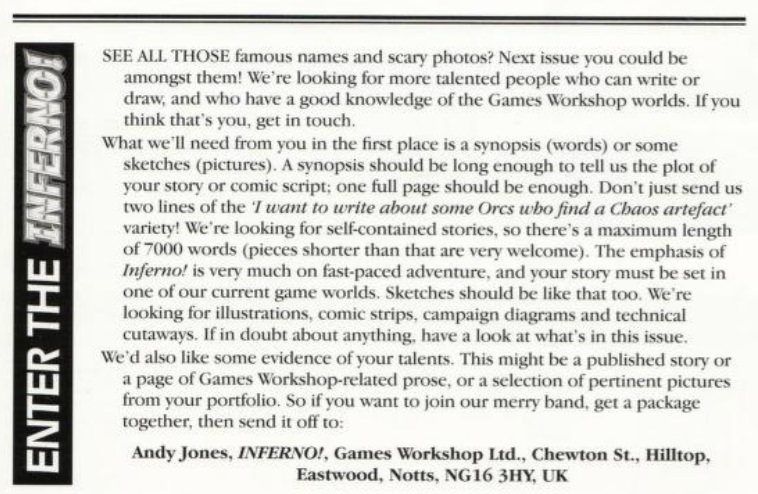
Giving Voice to Warhammer
A baker’s dozen of talents would help provide the content that brought the Black Library’s vision to life in 1997, all the way through the double-sized Christmas issue. Out was the old approach of looking to recruit established literary talent, and in was a “if you build it, they will come” approach that sought to use the Inferno! writing opportunity as a recruitment tool.
It would begin to bear fruit immediately as Inferno! rolled off the printing press with 64 pages of new content every 60 days, as Priestley, Jones, and Gascoigne’s vision finally coming to life.
Rick Priestley
Rick Priestley is a towering figure in the history of Warhammer, and to properly understand his role in creating the games and properties we know and love today it’s worth taking a moment to briefly summarize the history of Games Workshop itself.
Games Workshop was founded in London in 1975 by three flatmates: Ian Livingstone, Steve Jackson, and John Peake. Originally intended to manufacture wooden boards for traditional board games, they soon discovered Dungeons & Dragons and saw an opportunity in being the UK distributor for TSR, the company behind D&D (and other games).
They grew their business through running conventions and getting new players involved, which allowed them to open a retail space the following year with success continuing to follow. By 1978 they were ready for the next step of their plan, which was creating miniatures for use with their role-playing games. They found a willing partner in Bryan Ansell, a miniatures sculptor who had co-founded Asgard Miniatures in 1976, and together founded Citadel Miniatures.
1978 was also a significant year for two young game designers, Rick Priestley and Richard Halliwell. They’d been working on a set of rules for miniatures wargaming called Reaper, and had reached out to Ansell to see if Asgard might be interested in publishing them. Ansell passed, instead linking them up with the Nottingham wargaming community where it didn’t take long to find success. In 1978, Reaper was brought to print by the Nottingham Model Soldier Shop.
British miniatures wargaming was clearly on the rise. Ansell and Priestley remained close, with Priestley picking up the occasional shift at Citadel when the company’s order fulfillment fell behind. Priestley became more and more of a fixture, and eventually in 1982 he joined the Citadel team full-time.
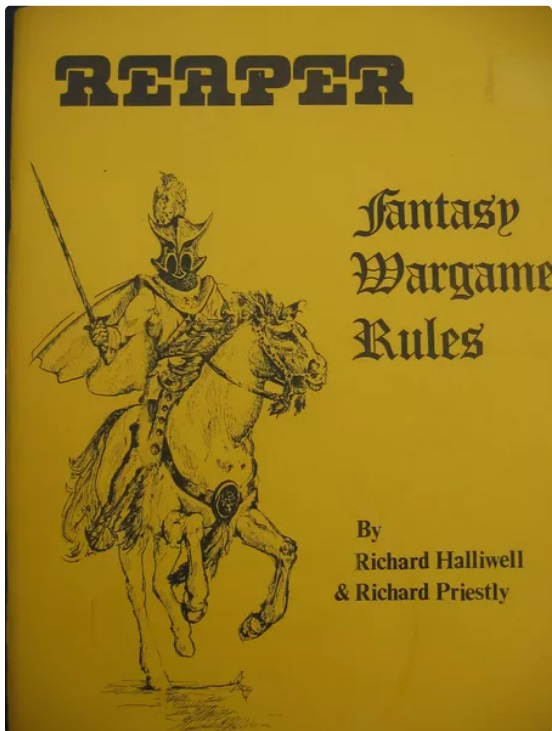
Priestley wasn’t content just to pull orders. His Reaper game had seen a new printing with Tabletop Games the year before, and he set about right away developing a new set of fantasy wargaming rules. Unsurprisingly, the idea of another market opportunity for their fantasy miniatures was attractive to Citadel, with Games Workshop having lost the exclusive distribution rights to D&D in 1979.
Priestley, Ansell, and Halliwell (who had also come aboard) put their heads together, and in 1983, Warhammer: The Mass Combat Fantasy Role-Playing Game was born. They announced the release with a full-color ad in White Dwarf #41, and the entire print run of 3,000 copies sold out quickly. A second edition was commissioned almost immediately.5
Games Workshop continued to grow- and to innovate. Citadel moved to a new site near Nottingham, and in 1984 Warhammer’s Second Edition was released with some rules revamps, enhanced RPG elements, improved printing, and color covers. Priestley began work on a science-fiction version of their Warhammer game, and in 1987 Warhammer 40,000: Rogue Trader arrived.
This timeline certainly helps underline how the early 40K body of literature was something of a ‘Wild West,’ quite a bit different than the landscape today. When Ian Watson and the other early authors of the Warhammer 40K stories sat down to put pen to paper (that history here), they had comparatively little to go on. At the official founding of the Black Library in 1997, the property was only just a decade old.
Priestley would go on to have a hand in other major Games Workshop releases, including Necromunda and the Lord of the Rings Strategy Battle Game. He’d remain with the company until 2009.
“By that time I think the GW management team had changed a great deal and the business was run by people very disconnected from the hobby. The company had settled down into a very limited product range and a single-minded business model, so there was increasingly little for me to do.”6
Priestley moved on to Warlord Games, where he helped develop the popular Bolt Action World War II game in 2012.
Andy Jones
Although not a “founding father,” Andy Jones is another one of those figures who are absolutely bound up in the DNA of Games Workshop, and in his thirty-year career there was little he didn’t touch.
Jones was working on his degree (in Law and Economics) in the mid-80’s, and painted miniatures as a side hustle for a little extra pocket money. Advertising as “AJ Figs” in the pages of White Dwarf one of his more regular customers was Bryan Ansell. When he completed his degree in 1986, he jumped at the opportunity to work for Games Workshop.
“[I figured I’d] ‘get it out of my system’ before doing my articles and becoming a solicitor,” he related in an interview in TechRaptor.7 “I finally ‘got GW out of my system’ in 2017, so [I] never did do the solicitor thing.”
Jones got his foot in the door in telesales, soon branching into marketing and events organization. He handled advertisement for White Dwarf, organized the first Game Day, and along with the legendary Warhammer artist John Blanche founded the Golden Demon Awards.
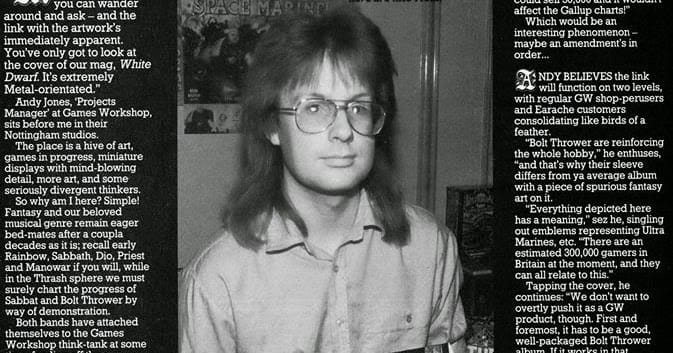
At the same time, Jones helped design some of GW’s most well-known titles such as Space Hulk and Warhammer Quest. As his portfolio and responsibilities grew he was involved with business segments from global events to property licensing to the spectacularly ill-fated Warhammer Records8– not a bad trajectory for someone who got their foot in the door in telesales.9
Jones would serve as Inferno!’s editor for its first sixteen issues, including contributing a couple of shorts (for Warhammer Quest) in its first year of publication before jumping into the comic side.
Jones ultimately departed Games Workshop in 2017, and now hangs his hat at Asmodee.
Marc Gascoigne
Drift down to 16 Hanway Street in London and you’ll be treated to some delicious-looking Korean BBQ at the restaurant Han Kang, but for a number of years that location had been the home of a major player in London’s retail gaming scene, Game Centre.10
Billing itself as having the largest selection in the world- and that’s not fantasy!, Game Centre sold tabletop and role playing games from its locations in London, Brighton, Birmingham, Nottingham, and Bournemouth. It was a constant presence in the advertising section of White Dwarf, the retail chain ultimately overextended and went out of business in 1984.
Games Workshop made multiple bids for the assets of the company and the Oxford Street lease, only losing out to Richard Branson of Virgin (who soon opened Virgin Games Store at that location ). One Games Centre asset they did manage to get ahold of? A young man named Marc Gascoigne.
Gascoigne had served as the in-house games expert at the Regent Street branch of Game Centre, and also published the game fanzine DragonLords. He was put to work right away on the Judge Dredd Role-Playing Game, which he co-developed with Rick Priestley and was published in 1985. After that it was straight onto the Blood Bowl project which launched the following year.
Gascoigne’s fanzine experience came in handy when Games Workshop began publishing Warlock, a quarterly magazine dedicated to the Fighting Fantasy line of gamebooks in 1984. Although it proved to be fairly short-lived (it ceased publication after issue 13), Gascoigne served as editor for the final four issues.
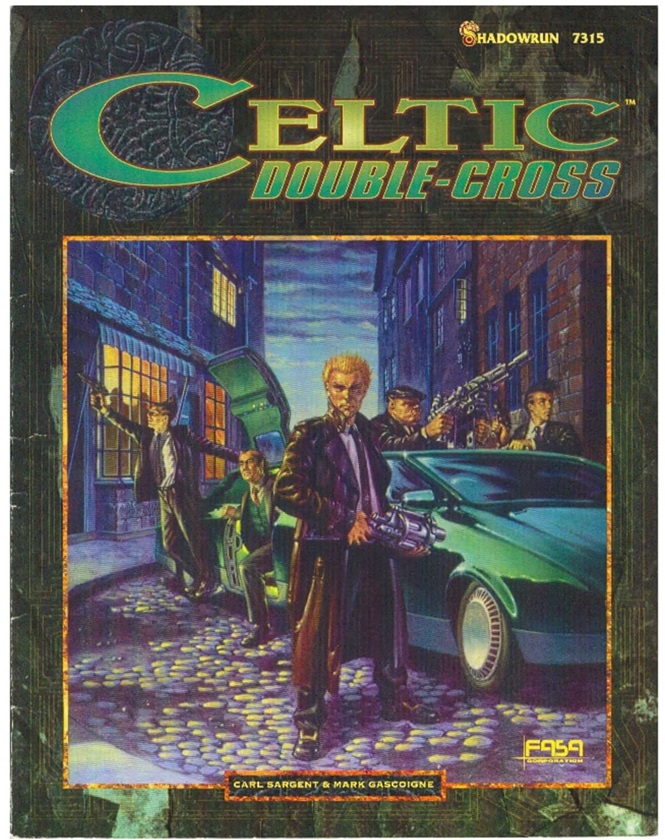
Gascoigne then went freelance for the following decade, doing work for FASA’s Shadowrun game as well as a series of nonfiction books for Puffin. He returned to Games Workshop when Jones contracted him to do some editing work on the Bretonnian Knights, only to stick around and help start the Black Library in 1997.
Gascoigne would go on to serve Games Workshop for another 10 years before joining HarperCollins.
In Our Next Installment
As they say to know where you’re going, you need to understand where you’re been. Priestley, Jones, and Gascoigne represented a tremendous confluence of creative talent whose legacy has endured to this day.
Inferno! represented a big shift in how the stories of Warhammer would be told- and who would be telling them. In our next installment, we’ll look at the first five issues of the magazine- one of which included a story called Ghost Maker from a writer you’ve almost certainly heard of: Dan Abnett.
Footnotes
- Inferno! Magazine, Issue 0. The Internet Archive has digital copies of all the Inferno! issues, it’s great to be able to see them as they were originally presented.
- Riley Ranks – Top Five Most Prolific MTG Artists | TCGplayer Infinite
- https://www.msn.com/en-us/entertainment/tv/blue-peter-has-always-been-boring-now-it-s-a-living-fossil/ This is a hilarious read.
- The Black Library | Bringing the worlds of Warhammer and Warhammer 40,000 to life.
- From the exceptional Dice Men by Livingstone and Jackson.
- From a terrific Reddit piece: Q&A with Rick Priestley PART 1 – PRIESTLEY’S CAREER AFTER LEAVING GAMES WORKSHOP : r/40kLore
- Man O War Interview Andy Jones | TechRaptor
- As a metalhead coming up in the early 90’s, this is a wild story: Warhammer Records: The oral history of 40K’s most metal spinoff | Polygon
- I bet this was hard to write: Moving on after 30 years at Games Workshop
- Games Centre – London’s RPG Home For Many Years – The Duke Mitchell Film Club
Have any questions or feedback? Drop us a note in the comments below or email us at contact@goonhammer.com. Want articles like this linked in your inbox every Monday morning? Sign up for our newsletter. And don’t forget that you can support us on Patreon for backer rewards like early video content, Administratum access, an ad-free experience on our website and more.
